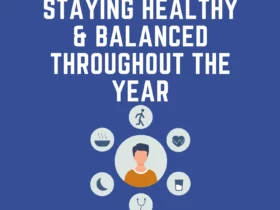Dive into the world of yoga poses with our comprehensive guide, featuring a wide range of asanas to suit practitioners of all levels. From foundational poses like Downward-Facing Dog to advanced inversions like Headstand, we’ll explore the benefits, techniques, and variations of each pose in detail. Whether you’re looking to improve flexibility, build strength, or find inner peace, our SEO-optimized resource has everything you need to enhance your yoga practice and deepen your understanding of these transformative postures.http://healthlikeaboss.com
Welcome to our sanctuary of serenity, where the art of yoga unfolds like petals of a lotus, revealing the beauty and grace within. In the sacred practice of yoga, each pose, or asana, is a manifestation of strength, flexibility, and mindfulness—a pathway to inner peace and physical vitality.
In this captivating blog post, we invite you to embark on a journey through the rich tapestry of yoga poses, where ancient wisdom meets modern practice. From the grounding foundation of Mountain Pose to the dynamic flow of Sun Salutations, we’ll delve into the essence of each pose, exploring its benefits for body, mind, and spirit.
Whether you’re a dedicated practitioner seeking to deepen your understanding of familiar poses or a curious beginner eager to explore new realms of movement and breath, this blog post is your gateway to the transformative power of yoga. Through detailed descriptions, alignment tips, and variations, we’ll empower you to embrace each pose with confidence and intention, unlocking its full potential to nourish and uplift your entire being.
So, roll out your mat, breathe deeply, and let’s journey together through the sacred landscape of yoga poses. As we explore the depths of each posture, may you discover strength, grace, and a profound sense of connection to yourself and the world around you. The path to inner peace begins here—let’s take the first step together.
Mastering Mind-Body Harmony: Essential Yoga Poses
In a world that constantly demands our attention and energy, finding balance and harmony between the mind and body has become essential for overall well-being. Yoga, an ancient practice with roots in India, offers a holistic approach to achieving this harmony. Through a combination of physical postures, controlled breathing, and mindfulness, yoga has proven to be a powerful tool for enhancing both mental and physical health. In this article, we will delve into the world of yoga and explore some essential poses that can help you master the art of mind-body harmony.
The Science Behind Mind-Body Harmony
Before we dive into the yoga poses, let’s understand the science behind the mind-body connection. Recent research has highlighted the profound impact of stress on our health. Chronic stress not only affects our mental state but also manifests physically through various ailments. Yoga acts as a bridge between the mind and body, helping to reduce stress and its detrimental effects.
When we practice yoga, we engage in controlled breathing, which activates the parasympathetic nervous system, also known as the “rest and digest” system. This counters the effects of the sympathetic nervous system, responsible for the “fight or flight” response. By calming the mind through mindful breathwork, yoga promotes a sense of tranquility that extends to the body.
Essential Yoga Poses for Mind-Body Harmony
Mountain Pose (Tadasana): Begin your practice with this foundational pose. Stand tall with your feet together, grounding them into the mat. Engage your core, lengthen your spine, and roll your shoulders back. As you breathe deeply, visualize yourself as a mountain – strong, steady, and unwavering.
Downward-Facing Dog (Adho Mukha Svanasana): This pose stretches and strengthens multiple muscle groups while promoting blood flow to the brain. Start in a plank position, then lift your hips upward, forming an inverted “V” shape with your body. Press your palms into the mat and relax your neck. Feel the stretch along the back of your legs and spine.
Warrior II (Virabhadrasana II): Channel your inner warrior with this empowering pose. Step one foot back, keeping the front knee directly over the ankle. Stretch your arms out to the sides, parallel to the ground. Gaze over the front fingertips, cultivating focus and strength.
Tree Pose (Vrikshasana): Improve balance and concentration with this graceful pose. Stand on one leg and place the sole of the opposite foot on your inner thigh or calf. Bring your hands to your heart center or extend them overhead like branches. Find a steady point of focus to enhance your balance.
Child’s Pose (Balasana): This restful pose encourages introspection and relaxation. Kneel on the mat, then sit back on your heels while extending your arms forward. Rest your forehead on the mat and take slow, deep breaths. Feel the gentle stretch along your spine.
Corpse Pose (Savasana): Conclude your practice with this ultimate relaxation pose. Lie down on your back, arms and legs comfortably extended. Close your eyes and focus on your breath. Allow your body to melt into the mat, releasing any tension. This pose rejuvenates both mind and body.
Breath: The Bridge between Mind and Body
Breath awareness is a central aspect of yoga practice. As you move through the poses, synchronize each movement with your breath. The inhales energize you, and the exhales allow you to deepen into the pose. Deep, conscious breathing not only oxygenates your body but also clears your mind of clutter, fostering a deeper mind-body connection.
Mindfulness and Meditation
Yoga extends beyond the physical postures; it includes mindfulness and meditation practices that nurture the mind-body relationship. Mindfulness involves being fully present in the moment, observing your thoughts without judgment. Meditation, on the other hand, cultivates mental clarity and inner peace.

10 Essential Yoga Poses for Beginners
- Explore foundational yoga poses perfect for beginners, including Downward-Facing Dog, Warrior I, and Tree Pose.
- Provide detailed instructions on proper alignment, breathing techniques, and modifications for each pose.
- Offer insights into the physical and mental benefits of practicing these poses regularly, such as improved flexibility, strength, and stress relief.
Advanced Yoga Poses
- Dive into advanced yoga poses like Crow Pose, Handstand, and Wheel Pose, taking your practice to new heights.
- Break down the techniques and alignment cues needed to safely and effectively practice these challenging poses.
- Share tips for building strength, flexibility, and confidence over time to progress into more advanced variations.
Yoga Poses for Stress Relief
- Explore soothing yoga poses designed to reduce stress and promote relaxation, such as Child’s Pose, Legs-Up-the-Wall, and Corpse Pose.
- Discuss the physiological effects of these poses on the nervous system, including the activation of the parasympathetic nervous system and the release of tension in the body.
- Offer guided relaxation techniques and mindfulness practices to enhance the stress-relieving benefits of these poses.
Yoga Poses for Back Pain
- Address common causes of back pain and explore gentle yoga poses to alleviate discomfort and improve spinal health, such as Cat-Cow Pose, Sphinx Pose, and Thread the Needle.
- Provide modifications and props to support individuals with varying levels of flexibility and mobility.
- Share testimonials or personal stories of individuals who have found relief from chronic back pain through a consistent yoga practice.
Yoga Poses for Core Strength
- Discover yoga poses that target the core muscles, including Boat Pose, Plank Pose, and Side Plank.
- Explain how a strong core can improve posture, support the spine, and enhance overall functional movement.
- Offer variations and progressions to challenge and deepen your core strength over time.
Partner Yoga Poses
- Explore playful and intimate yoga poses designed to be practiced with a partner, such as Partner Tree Pose, Double Downward Dog, and Partner Boat Pose.
- Discuss the benefits of partner yoga for building trust, communication, and connection with your partner or friend.
- Provide tips for safely and effectively practicing partner yoga, including clear communication, mutual support, and respect for each other’s boundaries.
Frequently Asked Questions (FAQs)
What is the significance of mind-body harmony in yoga?
Mind-body harmony in yoga refers to the balance and synchronization between your mental state and physical well-being. Yoga emphasizes the interconnectedness of the mind and body, recognizing that a healthy mind contributes to a healthy body, and vice versa. Achieving this harmony through yoga practices can lead to improved overall well-being, reduced stress, enhanced focus, and increased vitality.
Can beginners practice the essential yoga poses mentioned in the article?
Absolutely! The essential yoga poses mentioned in the article are beginner-friendly and can be practiced by individuals new to yoga. They serve as a foundation for building flexibility, strength, and mindfulness. Remember to start slowly, listen to your body, and make adjustments as needed. If you’re new to yoga, consider taking a beginner’s class or consulting a yoga instructor to ensure proper alignment and technique.
How often should I practice these essential yoga poses?
The frequency of your yoga practice depends on your personal schedule and goals. Starting with a few times a week is a good approach for beginners. Consistency is key – even a short daily practice can yield positive results over time. As you become more comfortable with the poses, you can gradually increase the duration and frequency of your practice.
Can yoga really help with stress reduction?
Yes, yoga is widely recognized for its stress-reducing benefits. The controlled breathing techniques and mindfulness practices in yoga activate the parasympathetic nervous system, which promotes relaxation and counteracts the body’s stress response. Regular practice of yoga has been shown to lower cortisol levels (the stress hormone) and enhance feelings of calmness and well-being.
How can I incorporate breath awareness into my yoga practice?
Breath awareness involves syncing your breath with your movements during yoga poses. As you move into a pose, inhale to create space and energy, and exhale to deepen into the stretch or posture. Focusing on your breath not only helps you stay present but also enhances the mind-body connection. Over time, conscious breathing becomes a natural part of your practice.
Conclusion
the practice of yoga poses offers a transformative journey of self-discovery, strength, and inner peace. Whether you’re a beginner just starting your yoga journey or an experienced practitioner seeking new challenges, the diverse array of poses provides endless opportunities for growth and exploration. From foundational poses to advanced variations, yoga offers something for everyone, regardless of age, ability, or fitness level. Through consistent practice and mindful attention, each pose becomes a gateway to deeper awareness, connection, and vitality.
As you continue to explore the world of yoga poses, may you find joy in the journey, strength in the challenges, and peace in the moments of stillness. Whether you’re flowing through a dynamic vinyasa sequence or finding stillness in a restorative pose, may each asana guide you closer to your truest self. So, roll out your mat, breathe deeply, and let the magic of yoga poses unfold. The possibilities are endless, and the journey is yours to embrace.













Leave a Reply